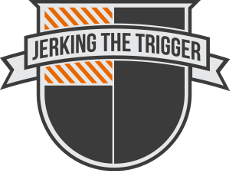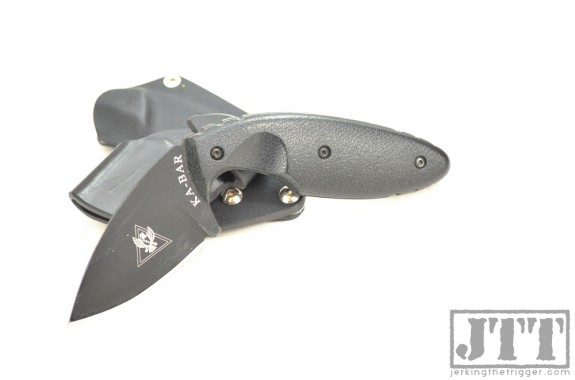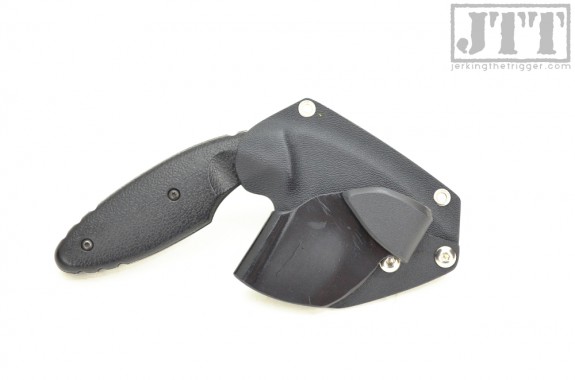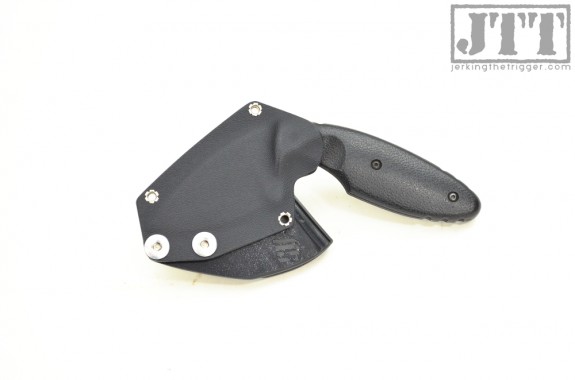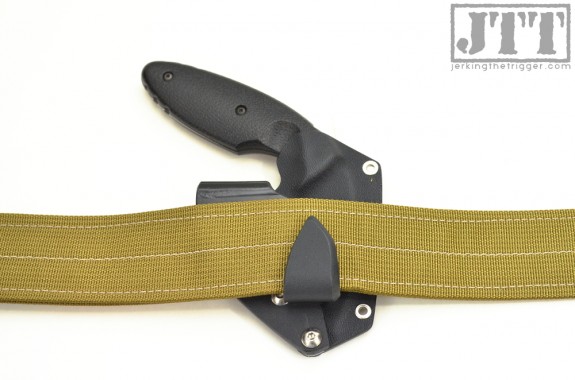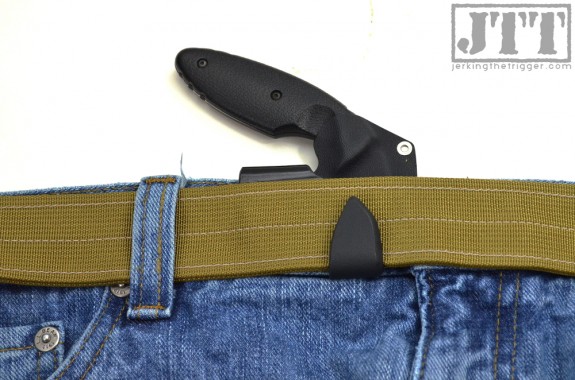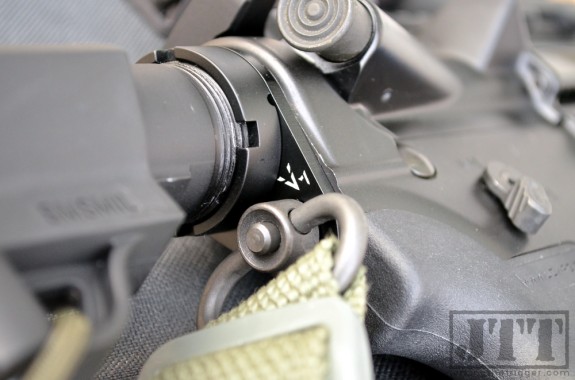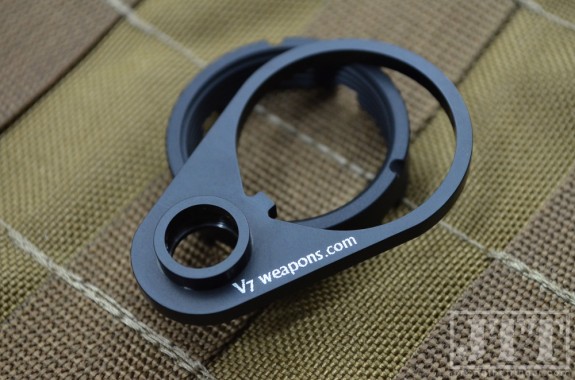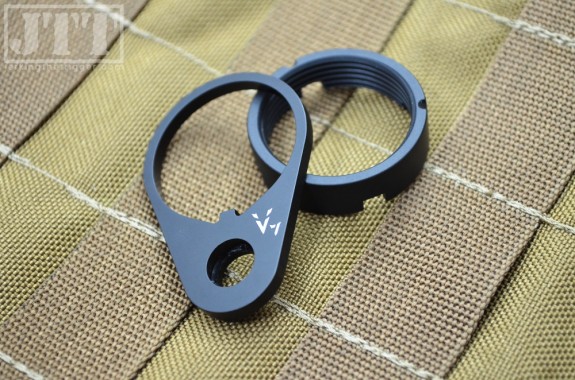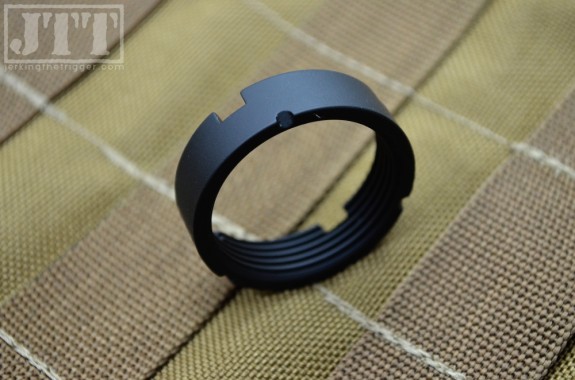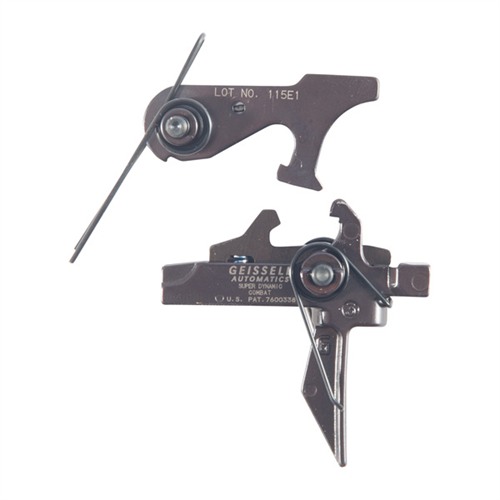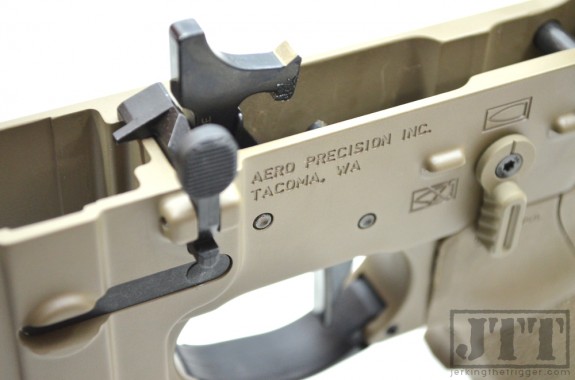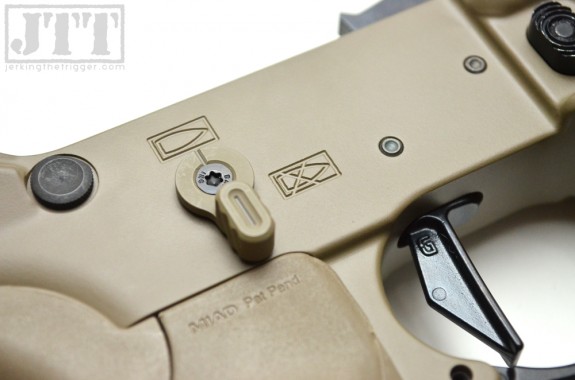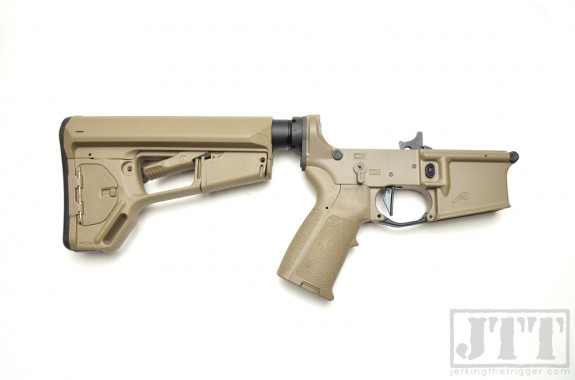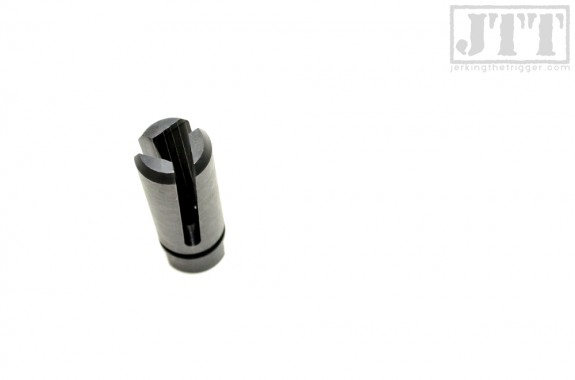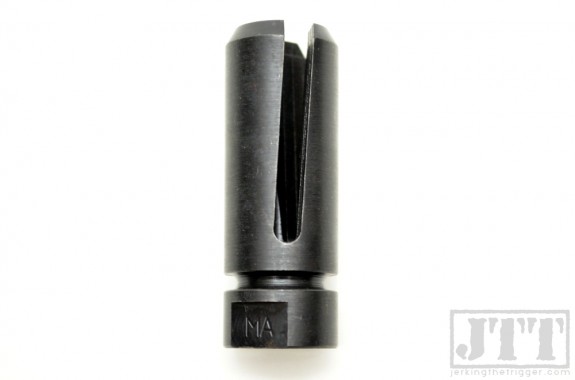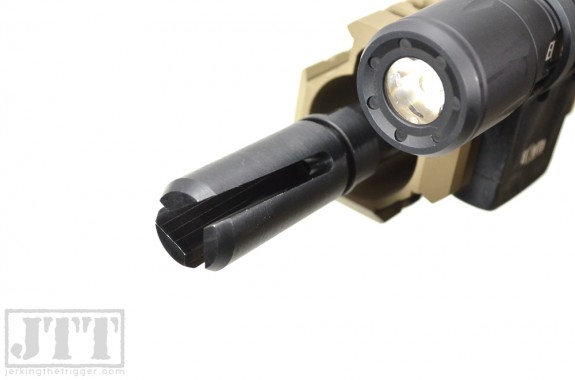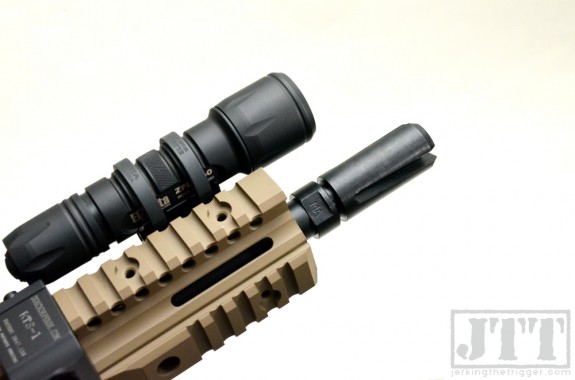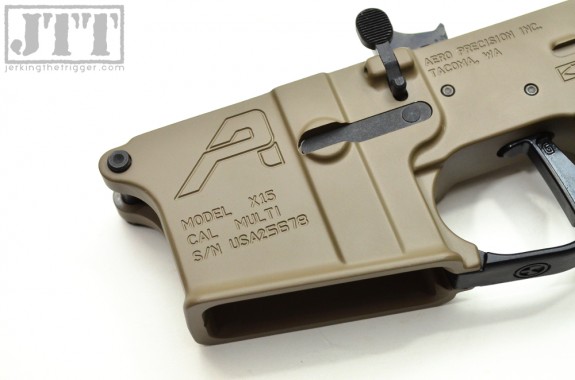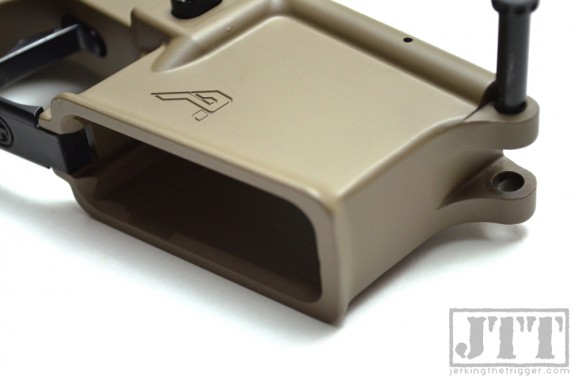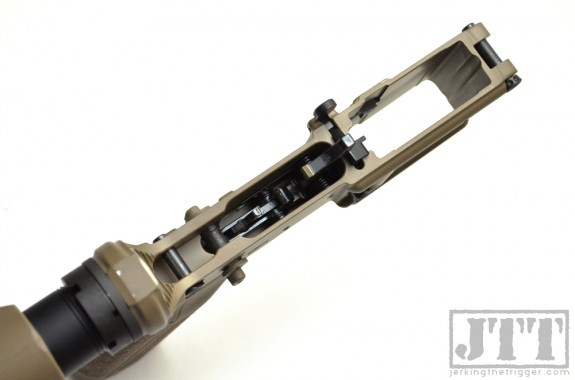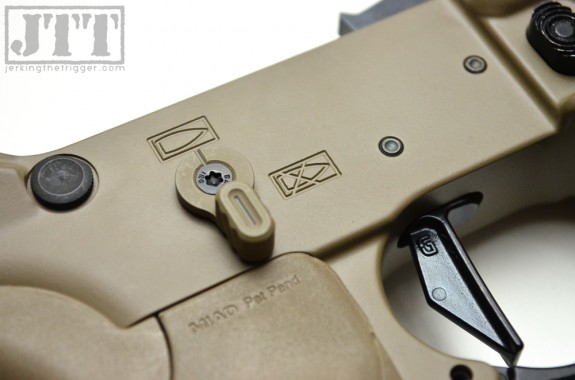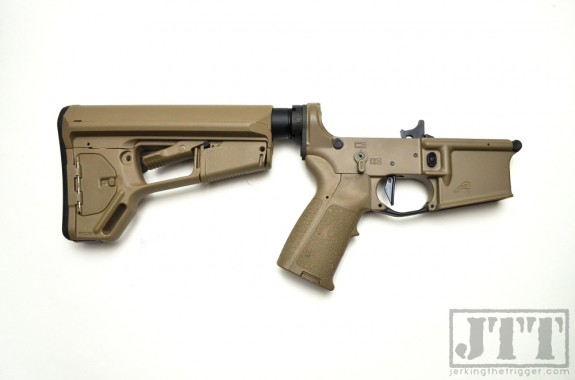I am a big fan of the Ka-Bar TDI and I know several of you are, too. It is inexpensive, compact, and intuitive to use. It also happens to be one of the easiest to carry fixed blade knives of all time. The sheath that comes with the TDI knives is functional but it is bulkier than it needs to be and could have better retention. Thankfully, there are numerous kydex benders who make excellent sheaths for the TDI. One such kydex bender is Peter Janda of FIN Designs who has been making kydex for the TDI longer than just about anyone.
The FIN Designs Ka-Bar TDI sheath is designed to be carried inside the waist band. The sheath itself is a pancake design with small rivets that keep bulk to a minimum. The retention is set fairly aggressive. It does a great job of retaining the TDI. It provides excellent ease of access thanks to an aggressively dished out grip area which allows the wearer to bury their index (or pinky finger in reverse grip) deeply into the finger choil of the knife.
The belt clip is where most of the magic happens. The clip serves to both keep the sheath on your belt during the draw and keep the grip of the TDI tucked into your body for concealment. The clip is made from kydex and shaped so that it flairs widely to one side and the curls back to the middle of the sheath where it hooks under the belt. This creates a wing of sorts that uses your belt’s tension to pull the handle close to your body. The hook that grips the bottom is fairly long and has never failed to retain the sheath during my practice draw strokes even with a narrower belt than intended. It is an extremely clever and functional design that is also very easy to install or remove from your belt.
The fit and finish is good enough overall. There are no sharp edges, in fact great care has been taken to soften the edges. However, the edges are a little rough in spots. It does not affect function. The rivet work could be a bit cleaner as well but mine has held up well to daily use.
It is considerably more comfortable to wear than the original sheath. It has a very rounded profile that prevents hot spots well. I wear mine in the appendix position and mostly forget that it is there. The sheath also conceals very well. It basically completely disappears under a light shirt thanks to the clip design.
I am extremely pleased with this sheath. It is reasonably priced and very functional. The clip design is what makes the whole thing work and it certainly does work. Check out FIN Designs to see all the available options.
